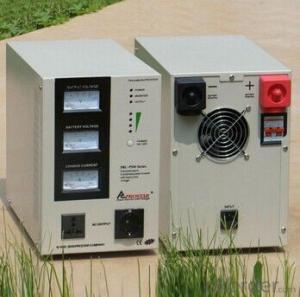Inverter Sine Wave Charger with Manual Bypass 5kW
- Loading Port:
- Tianjin
- Payment Terms:
- TT OR LC
- Min Order Qty:
- 10 pc
- Supply Capability:
- 10000 pc/month
OKorder Service Pledge
OKorder Financial Service
You Might Also Like
Specifications
Inverter sine wave charger
with AC input / output breaker
with Battery switch (breaker)
with manual bypass breaker
Automatic
5kW Inverter sine wave charger with manual bypass
Analogue meter display & digital meter display optional
Advantages
> Ultra-fast transfer time
From AC to DC less than 5ms, From DC to AC 0ms
(Routers, Switches PC, Servers and ATM machine will never re-start at Mains failure)
> Faster battery recharge time (Big charge current 30A~50A)
> Automatic tracking mains or generator input (Tracking input voltage, phase & frequency)
> AC / DC conversion waveform (Seamless connection without any spike)
> Battery equalization system (for longer battery life)
> Protection against short-circuit, low voltage, overload, over temperature and over-charge
> Low maintenance cost, Analogue meter & Digital meter Optional
Application range
Computer, Telecom, Deep Freezers, Air Conditioners, Petrol pump machines, Small Scale Industries Malls, Hotels, Restaurants, Banks, ATM Machines, Clinics, All kinds of Kitchen appliances & Home appliances, Weighing bridges,Elevators etc.
Technical specifications
| PRC-PSW SERIES | 500VA | 1000VA | 1500VA | 2000VA | 3000VA | 4000VA | 5000VA | 6250VA |
| BATTERY DC VOLTAGE | 12V | 12V/24V | 24V/48V | |||||
| INPUT AC RANGE | 160~280V / 45~55Hz | 165~260V / 45~55Hz | ||||||
| INVERTER OUTPUT | 220V ± 10% / 50Hz ± 1% | |||||||
| TRANSFER (AC LOSS) | 5ms after AC loss, automatic recovery after utility power back | |||||||
| FULL LOAD CAPACITY | 400W | 800W | 1200W | 1600W | 2400W | 3200W | 4000W | 5000W |
| WAVE DISTORTION | THD < 3% | |||||||
| OVER LOAD CAPACITY | 100% ~ 125% Keep Beeping; > 125% working 30s; >150% 1s shut down | |||||||
| OUTPUT SOCKET | 2outlets | 1outlet + terminal connectors | ||||||
| INDICATOR STATUS | Utility input with "POWER" & "BYPASS" light on | |||||||
| Utility power loss with "INVERTER" light on | ||||||||
| Connected with load "AC OUTPUT" light on | ||||||||
| Warning for battery low & over load with " ! " flashing | ||||||||
| Battery low protection, over load protection, short circuit protection with " ! " light on | ||||||||
| BATTERY CAPACITY | From top to bottom 4 indicator means 100%, 75%, 50%, 25% (" ! "Flashing) | |||||||
| CHARGE STATUS | Indicator flash change from 50% →75% → 100% every 1second means "CONSTANT CURRENT" | |||||||
| Indicator flash change from 50% →75% → 100% every 2second means "CONSTANT VOLTAGE" | ||||||||
| Indicator 50%/75%/100% 3lights on means "FLOAT CHARGE" & battery full | ||||||||
| CHARGE CURRENT | 15A | 20A | 30A/20A | 50A/30A | 70A/50A | |||
| Meter Display (OPTIONAL) | Analogue meter or Digital meter | |||||||
| RECHARGE TIME | 8~10hours | |||||||
| POWER EFFICIENCY | 80% at full load | 75% at full load | ||||||
| NOISE CONDITION | < 45dB | |||||||
| TEMPERATURE | —10°C ~ 40°C (Operation environment); —20°C ~ 50°C (Stock environment) | |||||||
| HUMIDITY | 0~95% no condensation | |||||||
| SIZE OF INVERTER | 420 x 230 x 350 mm | 500 x 280 x 430 mm | ||||||
| MEAS. AFTER PACKING | 45x26x38cm / unit | 53x31x46cm / unit | ||||||
| TYPE OF PACKAGING | Honeycomb carton | |||||||
| WEIGHT OF INVERTER | 11kg | 13kg | 16kg | 27kg | 29kg | 36kg | 38kg | 44kg |
| WEIGHT AFTER PACKAGING | 13kg | 15kg | 18kg | 29kg | 31kg | 38kg | 40kg | |

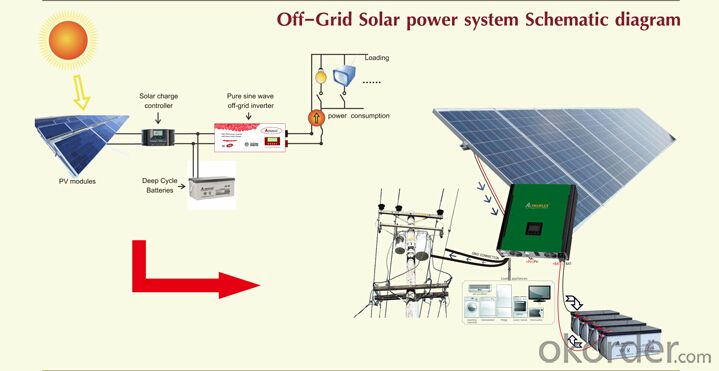

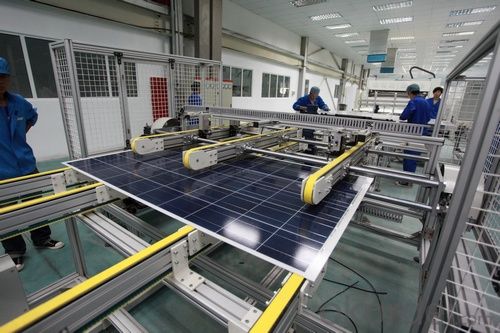
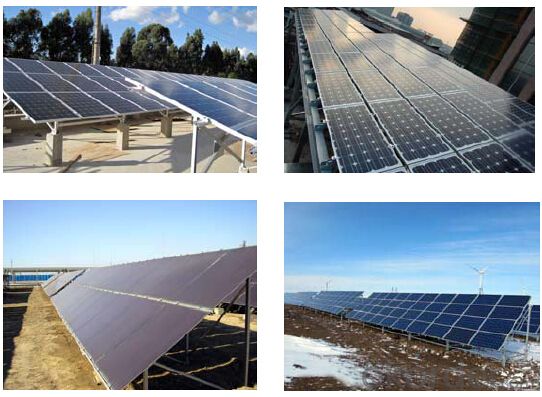
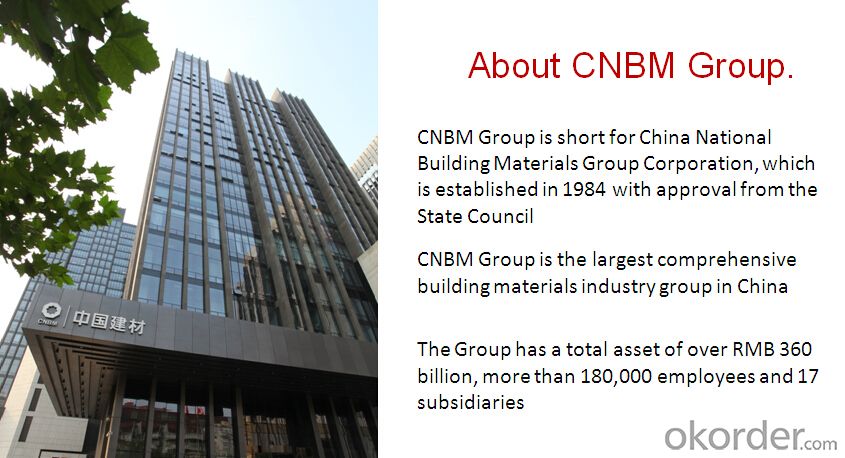

- Q:Can a solar inverter be used with solar-powered recreational vehicles (RVs)?
- Yes, a solar inverter can be used with solar-powered recreational vehicles (RVs). Solar inverters convert the direct current (DC) generated by the solar panels into alternating current (AC) that can be used to power various appliances and devices in the RV. This allows RV owners to utilize solar energy for their electrical needs while on the road.
- Q:Grid-connected inverter is generally divided into photovoltaic power generation grid-connected inverter, wind power grid-connected inverter, power equipment and grid-connected inverter and other power generation equipment power generation inverter.
- Grid-connected inverter is generally used with large-scale photovoltaic power plant system, a lot of parallel PV string is connected to the same set of inverter DC input, the general power of the use of three-phase IGBT power module, power
- Q:Are there any electromagnetic interference concerns associated with solar inverters?
- Yes, there are electromagnetic interference (EMI) concerns associated with solar inverters. Solar inverters convert the direct current (DC) generated by solar panels into alternating current (AC) that can be used to power homes and businesses. During this conversion process, high frequency switching occurs, which can generate EMI. EMI refers to the disturbance caused by electromagnetic radiation from electronic devices, which can interfere with the proper functioning of other electronic devices in close proximity. In the case of solar inverters, the EMI generated can potentially affect nearby electronic equipment, such as radios, televisions, or communication systems. To mitigate these concerns, solar inverter manufacturers often comply with relevant EMI standards and regulations. These may include limits on the amount of electromagnetic radiation emitted by the inverters and the use of shielding materials to reduce EMI. Additionally, some inverters incorporate filters or other EMI suppression techniques to minimize the interference created. It is important for solar installers and system designers to consider EMI concerns when selecting and positioning solar inverters. Proper installation and grounding techniques can help reduce EMI issues. Additionally, local regulations and guidelines should be followed to ensure compliance with EMI standards and to minimize potential interference with other electronic devices. Overall, while there are EMI concerns associated with solar inverters, proper design, installation, and adherence to relevant standards can effectively mitigate these concerns and ensure the smooth operation of both the solar system and other electronic equipment in the vicinity.
- Q:How does a solar inverter handle voltage flicker?
- A solar inverter handles voltage flicker by constantly monitoring the grid voltage and adjusting its output to maintain a stable voltage. It uses advanced control algorithms to quickly respond to fluctuations and minimize the impact of voltage flicker on the connected devices.
- Q:What is the difference between a grid-connected inverter and an off-grid inverter? What are the advantages of a hybrid inverter?
- Hybrid inverter is not a clear concept, but now both energy storage dual-grid inverter does have the ability to receive control system,
- Q:How does a solar inverter protect against lightning strikes?
- A solar inverter typically protects against lightning strikes by incorporating surge protection devices and grounding systems. These features help to divert the excess energy caused by a lightning strike away from the sensitive electronic components of the inverter, preventing damage and potential electrical hazards.
- Q:Can a solar inverter be used with a solar-powered electric gate system?
- Yes, a solar inverter can be used with a solar-powered electric gate system. The solar inverter is responsible for converting the DC power generated by the solar panels into AC power, which is required to operate the electric gate system. This allows the solar energy to be utilized efficiently in powering the gate system.
- Q:What is the role of a solar inverter in a grid-tied system?
- The role of a solar inverter in a grid-tied system is to convert the direct current (DC) electricity generated by the solar panels into alternating current (AC) electricity that can be used to power electrical appliances and be fed back into the utility grid. It also ensures the synchronization of the solar system with the grid and regulates the voltage and frequency of the electricity being produced.
- Q:Can a solar inverter be used for both residential and commercial applications?
- Yes, a solar inverter can be used for both residential and commercial applications. Solar inverters are designed to convert the DC electricity generated by solar panels into AC electricity that can be used to power homes or businesses. They can be scaled to accommodate the specific energy needs of residential or commercial properties, making them suitable for various applications.
- Q:Can a solar inverter be used with concentrated photovoltaic systems?
- Yes, a solar inverter can be used with concentrated photovoltaic systems. A solar inverter is responsible for converting the direct current (DC) electricity generated by the photovoltaic panels into alternating current (AC) electricity that can be used to power electrical devices. This conversion process remains the same regardless of the type of photovoltaic system being used, including concentrated photovoltaic systems. Therefore, a solar inverter is an essential component for converting the DC electricity produced by concentrated photovoltaic systems into usable AC electricity.
1. Manufacturer Overview |
|
|---|---|
| Location | |
| Year Established | |
| Annual Output Value | |
| Main Markets | |
| Company Certifications | |
2. Manufacturer Certificates |
|
|---|---|
| a) Certification Name | |
| Range | |
| Reference | |
| Validity Period | |
3. Manufacturer Capability |
|
|---|---|
| a)Trade Capacity | |
| Nearest Port | |
| Export Percentage | |
| No.of Employees in Trade Department | |
| Language Spoken: | |
| b)Factory Information | |
| Factory Size: | |
| No. of Production Lines | |
| Contract Manufacturing | |
| Product Price Range | |
Send your message to us
Inverter Sine Wave Charger with Manual Bypass 5kW
- Loading Port:
- Tianjin
- Payment Terms:
- TT OR LC
- Min Order Qty:
- 10 pc
- Supply Capability:
- 10000 pc/month
OKorder Service Pledge
OKorder Financial Service
Similar products
New products
Hot products
Hot Searches
Related keywords
